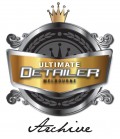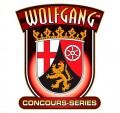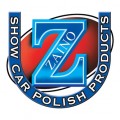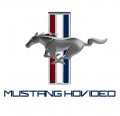WHAT CAUSES SWIRL MARKS?
Swirl marks are actually microscopic scratches in the paint finish. Swirls are often caused by the use of a buffer with the wrong type of polishing pad and/or wax or polish. Automatic car washes can also cause swirls, especially on late model vehicles with clear coat paints. Another way to cause swirl marks is hand application, or removal of products using a harsh material. Pads and cloths containing micro abrasives (from falling on the ground or improper storage) are also a cause of swirls marks. To avoid swirls, thoroughly wash all dirt particles from your finish before applying polish or wax. Always use a 100% terry cloth towel or Supreme Shine Microfibre Towel (X2010) because the nap draws any contaminants on the surface into the towel instead of allowing them to scratch the sensitive paint.
WHAT IS CLEAR COAT PAINT?
Today, over 90% of all factory finishes are clear coated. A clear coat finish is a multi-layer paint system comprised of a primer, a base coat (the pigment colour of your car), and a clear coat. Although a clear coat does protect the base coat, it is very sensitive to scratches and swirl marks because of its clear, non-pigmented layer that allows light to reflect through it.
HOW CAN I TELL IF MY CAR’S PAINT HAS CONTAMINATION AND NEEDS CLEANING?
Although your paint may appear to be clean, microscopic particles of contamination such as dirt, dust and tree sap mist may be present, along with other residue such as the chemicals deposited by acid rain. This material gradually bonds to your paint—and even repeated washing won’t remove it. We recommend you use the “Smooth-As-Glass” test to determine whether your surface has accumulated significant contamination and needs to be cleaned. First, wash your car and dry it thoroughly. Then gently run your fingertips over its top surfaces (the hood, roof and boot). The paint should feel as smooth as glass-with no sense of roughness or texture. If your paint doesn’t pass the test, it’s time to clean and polish it before adding your next coat of protective wax. Deep cleaning removes stubborn environmental contamination, as well as dead paint that dulls your finish. Polishing restores the paint, deepening the colour and creating a brilliant gloss while it erases minor imperfections.
WHY DO CAR FINISHES FADE? WHAT IS OXIDATION? HOW CAN I PREVENT IT FROM HAPPENING?
Automotive paint is designed to reflect light to create the dazzling shine we see in most new car showrooms. If your car were washed daily and kept indoors 90% of the day, the shine would last for years because there would be no surface contamination to dull, stain or oxidize the finish.
Most modern car finishes consist of a base coating that contains the colour, and a protective clear coating on top that is designed to keep the colour paint from oxidizing. This outer clear coat adds UV protection that helps prevent the sun’s rays from drying out the base paint. Oxidation was an obvious problem ten years ago because you quickly saw the colour fade. Now that the outer paint layer is usually clear, oxidation is less obvious-yet it still occurs. Constant exposure to the sun plays havoc with your cars paint, UV light that damages your skin does the same thing to your cars paint. If the paint isn’t maintained it oxidizes and the surface gradually becomes duller and duller.
Even more than yesterday’s paints, today’s clear coat finishes look faded whenever the surface becomes contaminated by airborne pollution, acid rain, industrial fallout and countless other factors. If the contamination isn’t removed frequently, it reduces the reflective quality of the finish until it looks dull and lifeless. If the contamination is left on the car for some time, it can begin to etch into the thin clear coat paint layer and expose the base coat to direct UV rays and even greater damage.
Once the clear coat protection is gone, the car usually requires costly repainting.
WHAT IS THE DIFFERENCE BETWEEN A POLISH AND A WAX?
There is a lot of marketing hype and spin trying to convince us that there is no difference between a polish and a wax, don’t be mislead, they are two completely different products.
Professionals know there is a big difference. A polish is an abrasive conditioner that restores the paint, eliminating fine scratches and creates incredible high gloss not possible with waxes. An application of polish should always be followed by waxing to protect the shine and extend the life of the paint. If you own a dark colour car, you’ll see a dramatic difference if you use a polish.
WHAT IS CARNAUBA WAX?
Carnauba wax comes from a species of South American palm tree, and is one of the hardest types of wax available. Don’t fall victim to the hype advertised on some products (100% Carnauba Wax) 100% Carnauba Wax is the equivalent to going over your car with a stone, it would scratch the paint. The highest percentage of Carnauba is about 3% per volume, with fillers, perfumes, oils and solvents..
WHAT IS CLAY BAR ?
Clay Bars are used to remove Paint Contamination, Overspray and Industrial Fallout.
WHAT IS PAINT CONTAMINATION?
Paint contamination is tiny metal shavings from rail dust, brake dust, and industrial fallout. This contamination affects all paint finishes and can cause serious damage when left untreated. Paint contamination can be felt as a “rough or gritty” texture on the paint’s surface which lead to tiny rust spots.
There is no wax, Natural or Synthetic, or any chemical treatment that can prevent or protect against this contamination. Compounding with an abrasive polish may remove paint contamination but it can only be performed a few times before removing too much of the top, clear coat finish.
Where does it come from?
There are three major causes of paint contamination: 1. Rail dust – produced from the friction of train wheels against railroad tracks. Over 70% of new vehicles are shipped by rail. Rail dust can contaminate a new car’s finish before it even reaches the dealership. Anytime a vehicle is parked or travels near a railroad it is subject to rail dust contamination. 2. Brake dust – particles produced from the friction of brake pads rubbing against the rotor. This metal on metal friction disperses tiny particles of bare metal into the air and on the highway where it collects on passing vehicles. 3. Industrial fallout – another word for pollution, industrial fallout is a byproduct of our modern industrial age.
How to test for Paint Contamination:
After washing and drying your vehicle put your hand inside a plastic sandwich bag and lightly run your fingertips over the paint’s surface. It should feel smooth as glass. If the surface has a rough, gritty or pebble-like feel, it indicates the presence of paint contamination. This needs to be removed with a Clay Bar before applying a wax protectant.
Removing Paint Contamination:
The best solution is the use of a Clay Bar. Developed in Japan nearly five years ago, Clay Bars safely remove rail dust and industrial fallout by “pulling” it off the surface. It does not “cut” or perform any abrasive action normally associated with polishing or compounding.
The latest evolution in Clay Bar technologies are made in the U.S.A. of entirely man made polymers. These Clay Bars perform all the functions of traditional Clay Bars but have a number of advantages:
HOW DOES MACHINE POLISHING WORK?
Basically, the technique removes microscopic amounts of the surface in order to smooth away problems. It could be likened to ultra fine sanding but when we talk about microscopic we are referring to a few microns (a micron is 1/1000th of a millimetre)!
A combination of cleansers and polishes of various grades are applied to a car’s paint using specifically designed buffing pads (there are many grades and types available) and either rotary or dual action polishers. Each stage is meticulously controlled and vigorously reinspected using specialist lamps and paint depth gauges.
As you can probably tell, to be able to do the job properly requires being able to judge the existing condition of your car’s paint and foresee likely issues before starting work. This requires not only the use of the right equipment, but also years of experience and an understanding of the many different paint systems used on cars.
Will Removed Marks Reappear?
In a word, NO, not the way that we do it. Any marring removed by our paint correction is gone for good.
New marks may appear over time (we can’t stop future scratches), but we’ll provide you with free, simple advice to help limit future damage caused by valeting and keep the paintwork in top condition.
In addition, because we have a very sympathetic approach to correcting paintwork (not only by using very high-tech polishes, but also in the processes we use), we’d be able to polish your car again whenever you felt it was needed.
What Is Car Paint Correction or Cut & Polishing?
Also known as swirl mark removal or machine polishing, paintwork correction is the reduction or removal of marks in the top layer of paint to produce a more refined finish.
Paint correction can involve either the hand or machine application of varying grades of cleanser, polish or compound. The majority of work is usually done with rotary machine polishers to get the best level of correction.
Good paint correction requires a high degree of skill and concentration, but done properly, it really can transform the look of a car by dealing with (amongst other things); hard water marks, etching caused by bird muck or fly squash, swirl marks, scratches and fading.



















